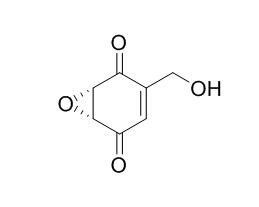Phyllostine
Phyllostine appears to be their more immediate precursor, since PCMB-treated extracts of J2 converted Phyllostine but not isoepoxydon to these new metabolites.
Inquire / Order:
manager@chemfaces.com
Technical Inquiries:
service@chemfaces.com
Tel:
+86-27-84237783
Fax:
+86-27-84254680
Address:
1 Building, No. 83, CheCheng Rd., Wuhan Economic and Technological Development Zone, Wuhan, Hubei 430056, PRC
Providing storage is as stated on the product vial and the vial is kept tightly sealed, the product can be stored for up to
24 months(2-8C).
Wherever possible, you should prepare and use solutions on the same day. However, if you need to make up stock solutions in advance, we recommend that you store the solution as aliquots in tightly sealed vials at -20C. Generally, these will be useable for up to two weeks. Before use, and prior to opening the vial we recommend that you allow your product to equilibrate to room temperature for at least 1 hour.
Need more advice on solubility, usage and handling? Please email to: service@chemfaces.com
The packaging of the product may have turned upside down during transportation, resulting in the natural compounds adhering to the neck or cap of the vial. take the vial out of its packaging and gently shake to let the compounds fall to the bottom of the vial. for liquid products, centrifuge at 200-500 RPM to gather the liquid at the bottom of the vial. try to avoid loss or contamination during handling.
OENO One2023, 57:3.
Molecules.2021, 26(2):E255.
Int J Mol Sci.2020, 21(6):2190.
SSRN2024, 4937625.
Metabolites.2019, 9(11):E271
Int J Mol Sci.2024, 25(6):3390.
Int J Mol Sci.2023, 24(20):15320.
Front Nutr.2024, 11:1409309.
Cell Death Differ.2021, 1-8.
Toxicol Res.2019, 35(4):371-387
Related and Featured Products
Can J Microbiol. 1979 Aug;25(8):881-7.
Patulin biosynthesis: the metabolism of phyllostine and isoepoxydon by cell-free preparations from Pencillium urticae.[Pubmed:
43192]
METHODS AND RESULTS:
Cell-free extracts of Penicillium urticae (NRRL 2159A), and its Pat- mutants, J2, J1, and S11, were found to contain significant NADP-dependent isoepoxydon dehydrogenase activity. This reversible interconversion of the epoxides (-)-Phyllostine and (+)-isoepoxydon occurred optimally at pH 5.8 and was completely inhibited by 1 mM p-chloromercuribenzoate (PCMB). The cytosol enzyme possessed specificity for both substrate and cofactor since neither (+)-epoxydon, an epimer of (+)-isoepoxydon, nor NADH was utilized. Cell extracts of the parent and of mutant J2, which is blocked before the epoxides in the patulin pathway, were found to convert Phyllostine and isoepoxydon to a number of unknown metabolites which appeared as yellow spots on thin-layer chromatograms after spraying with a chromogenic reagent. Extracts of mutant J1 were unable to carry out this conversion, while whole cells of mutant S11 accumulated what appeared to be these same 'yellow' compounds.
CONCLUSIONS:
Since PCMB-treated extracts of J2 converted Phyllostine but not isoepoxydon to these new metabolites, Phyllostine appeared to be their more immediate precursor. The relative positions of isoepoxydon and Phyllostine in the patulin pathway are discussed.



